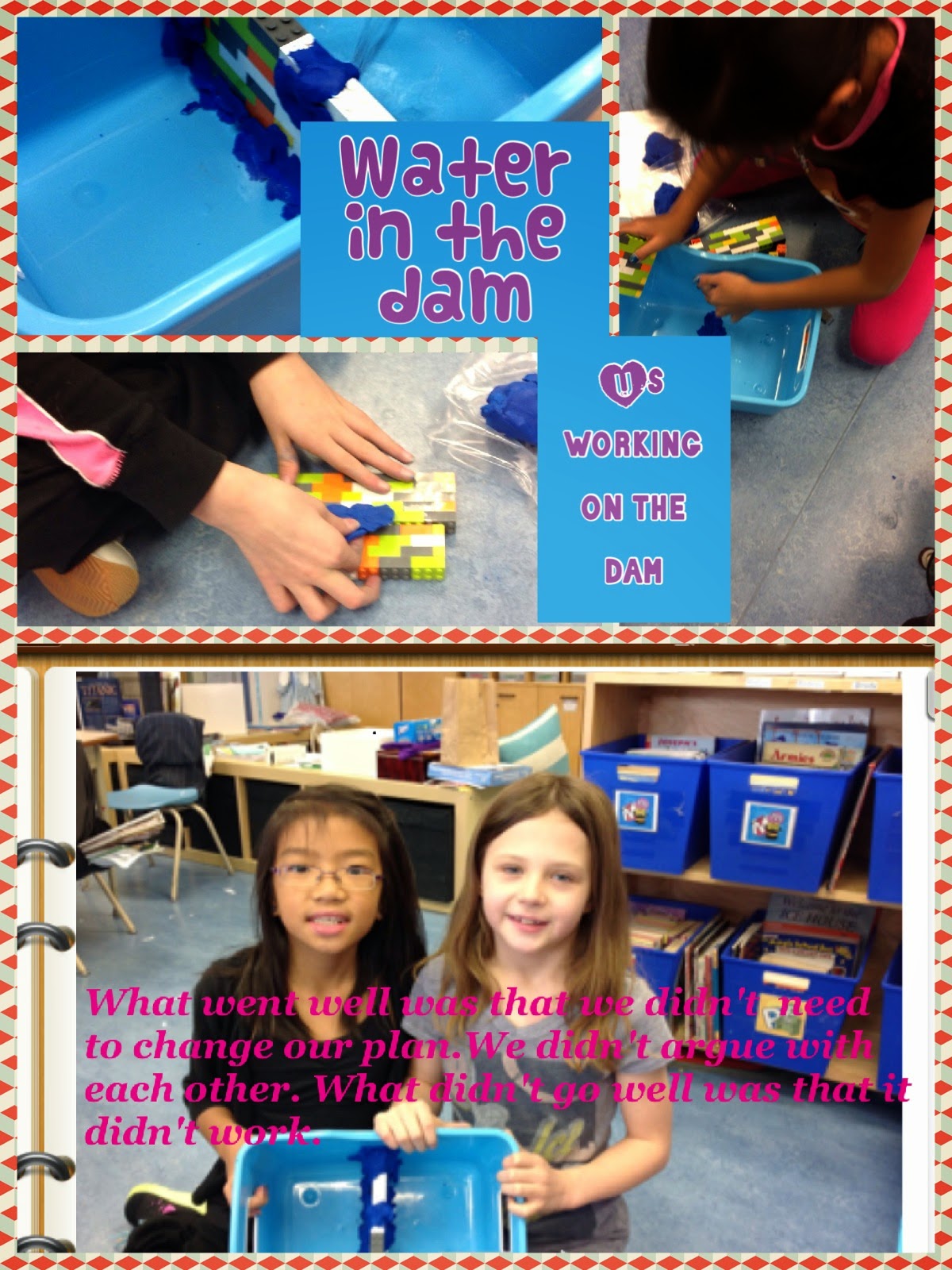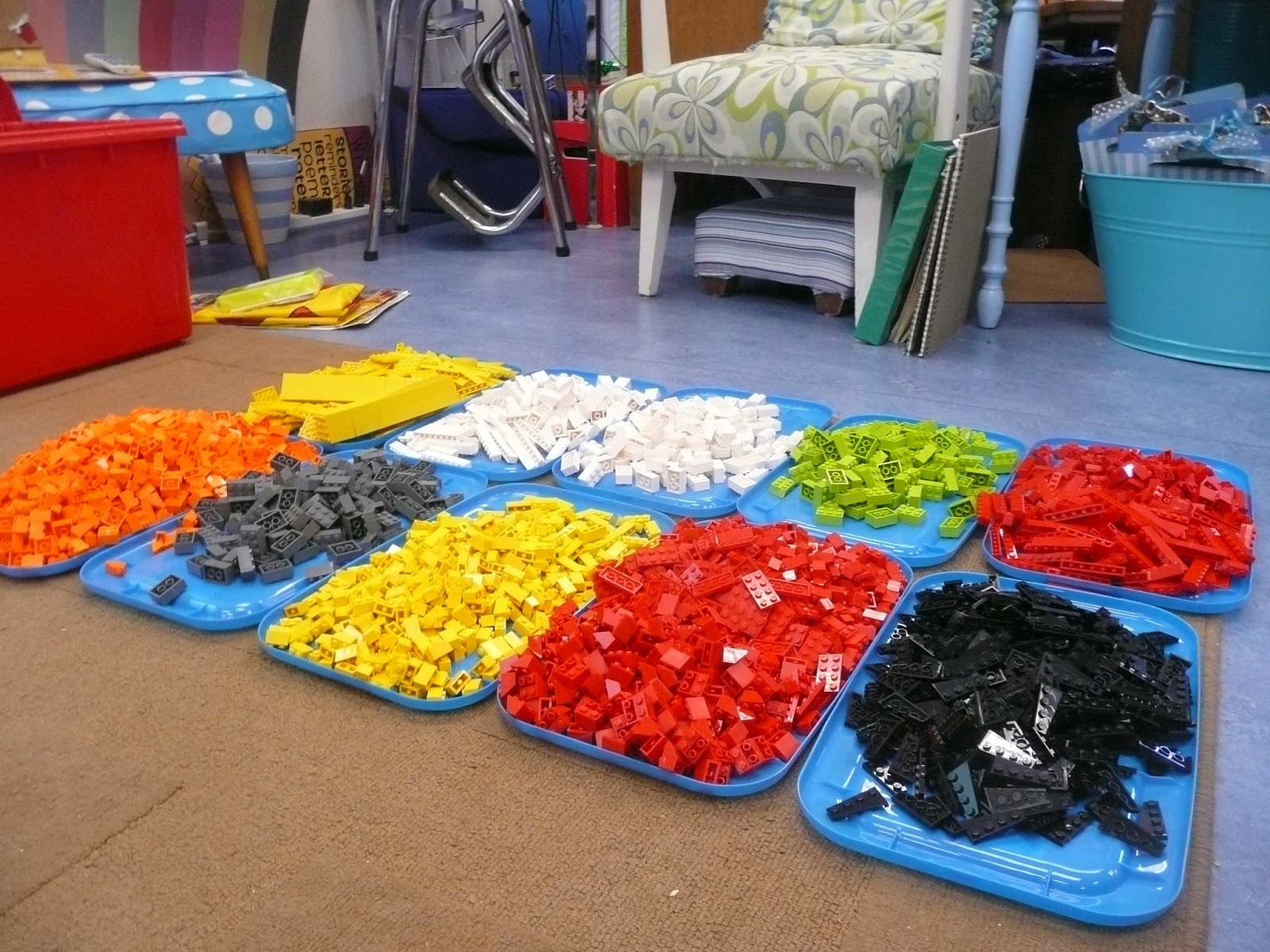Working in pairs, the students created a plan on how they were going to use the sticks and modelling clay to keep the water on one side of their shoebox, essentially creating a dam.
One of the aspects of our science curriculum is to have the students understand about creating a 'fair test', and with this challenge, those words came up time and time again.
There were no further instructions from me. It can be hard to relinquish control but I kept thinking that this challenge was about the students' learning, and that made it easier!
Ten groups of two and no one created a dam like any other!
The second part of this activity was to record their work in progress. They used an app called PicCollage, took photos using the criteria that we all agreed on and then put the collage together including words.
They were so enjoying the aspect of creating a collage of their learning as it was happening.
Today, the partners put the finishing touches on their dams. They were deciding which side they would be adding the water to.
I was so impressed with their inventiveness!
We set up criteria for a fair way to add the water, ensuring that each dam would receive the same amount and in the same manner. We were all excited as we added water to the first dam!
It held the water.....but wait, was that water seeping through?
I loved the comment of one of the girls "That water is so sneaky! It will find any little hole to get through!" Such a powerful learning moment!
This one reminded us of a beaver dam, as we had looked at some online.
As the dams held the water and then did not, the students offered theories and talked about design principles....though they didn't even know that was what they were saying!
The conversation was so interesting, as the students made predictions about why a certain design would or would not work. They were complementary to their fellow engineers saying things like "Well we can see that you really tried hard." or "Next time you need to make sure that your dam is taller!"
Finally one dam was absolutely successful. This design did not allow even a smidgeon of water to creep to the other side!
Some of the students reminded me that when we had looked at photos of real dams, there was water on both sides...high water and low water (spillways). That will be part of our next conversation....how important is it to control the water? How does that control assist in making electricity?























































